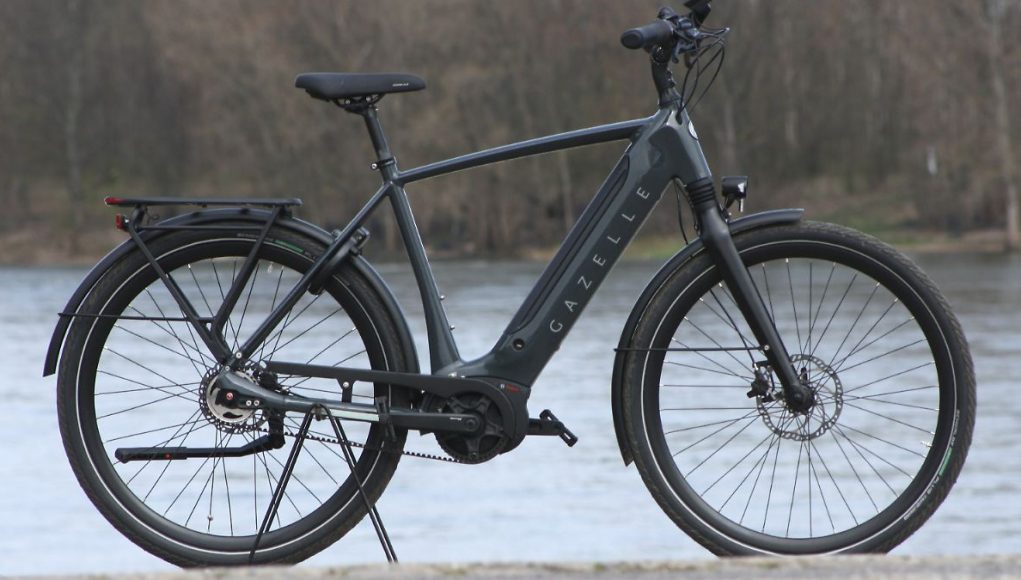Pedaling with electricity
How does a Pedelec work?
This audio version was artificially generated. More info | Send feedback
A Pedelec combines the rider's muscle power with the energy of an electric motor. The battery and sensors also play an important role in the built-in tailwind.
The Pedelec is a relatively new type of bicycle that offers an electric drive in addition to the classic pedal drive. Pedelecs can therefore in principle be moved without motor power like normal bicycles, just by pedaling and thus using the muscle power of the legs. Bicycles and bicycle-like vehicles with electric motors existed long before Pedelecs. With these e-bikes, the intensity of the motor support can often be regulated using the hand throttle, so that in principle a pedal drive is not necessary.
The revolutionary new and special thing about Pedelecs is that the motor supports the propulsion while the pedals are moved like on a classic bicycle. The first representatives of this type were bicycles that came onto the market in 1993 with the Power Assist System (PAS) from Yamaha. There are now a large number of providers of drive solutions, some of which are very different.
Sensor analyzes pedal movement
In order to create the most natural riding experience possible in conjunction with the electric support, Pedelecs require a sensor that can analyze the rider's pedaling movement. There are simple systems that simply measure the pedal rotation and use this signal to regulate the intensity of the support. More complex systems rely on pedal force measurement, which enables more sensitive adjustment of the e-support.
Another important feature of a Pedelec drive is a control unit in which the information is processed and the intensity of the support is regulated. For normal Pedelecs, which do not require special road approval, the e-support is limited to 25 km/h in most European countries. In the USA, the limit is 20 miles or 32 km/h. In Europe, there is also the class of S-Pedelecs, which support up to 45 km/h. However, these fast Pedelecs require an insurance license plate.
Lithium-ion batteries as a power source
All types of e-bikes require a power source. Rechargeable lithium-ion batteries have become the permanent and almost unalterable choice here, and in many models they are now even integrated into the frame and are therefore invisible. In addition, the Pedelec has an on-board network with a voltage of 36 or 48 volts, which also enables the operation of lighting systems, mobile phone solutions or ABS thanks to the permanently and generously available amounts of power.
The heart of the Pedelec, however, is the electric motor. By far the most common position for this is in the area of the bottom bracket. This variant is called a mid-engine. Mid-engines can often be integrated into the frame structure in a form-fitting manner. The power is transmitted to the rear wheel via the normal pedal drive using a chain or belt. In Germany, Bosch has been the leading provider of mid-engine solutions for many years and now has a differentiated portfolio. But there are also good alternatives from Brose, Yamaha, Shimano, Bafang or ZF.
Rear engine less common
Another, less common alternative is the rear motor. These are usually electric machines that are installed centrally in the rear wheel and are therefore also known as rear hub motors. They can be large or inconspicuously small. Advantage: Small rear motors are inconspicuous, which is why corresponding Pedelecs often look very similar to classic bicycles. Disadvantage: They cannot be combined with the rear hub gears that are popular in the bicycle world.
Pedelecs are often offered with hub motors for the front wheel, especially in the lower price segment. Visually, these are also generally rather inconspicuous. The disadvantage here is that they cannot be combined with a hub dynamo. In addition, the drive can have a disruptive effect on the steering.
There are now also some retrofit kits that can be used to convert simple bicycles into Pedelecs. In addition to mid-range or hub motors, solutions are also available where the electric drive acts directly on the tires. Retrofit solutions often cost only a few hundred euros and are therefore cheap alternatives to full Pedelecs, which usually cost several thousand euros.































